Luke Littler conquered the darts world. A new generation wants in
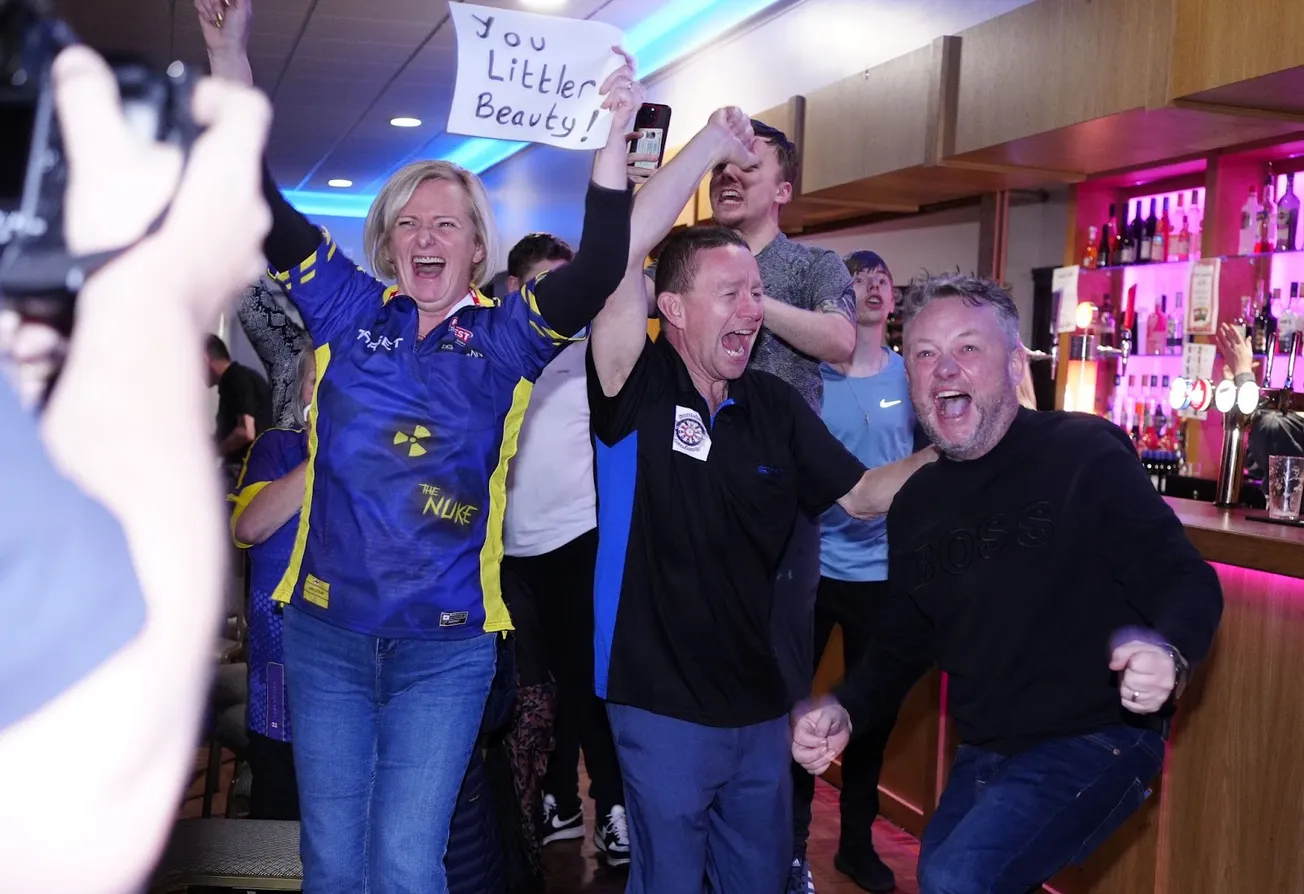
Darts hasn't been this popular since the 1980s. How did Merseyside become the game’s new Mecca?
“When Alexander of Macedon was 33, he cried salt tears because there were no more worlds to conquer… Eric Bristow is only 27.”
So pronounced Sid Waddell — master of the comic overstatement and the greatest sports commentator of all time —as the prodigious Bristow stood on the verge of a third BDO World Darts Championship in 1984.
But forty years later, at the Alexandra Palace, Luke “the Nuke” Littler — at the even tenderer age of 17 — made both the Macedonian master and the Cockney conqueror look like slackers. Last weekend, Littler beat Michael van Gerwen 7-3 to take the Sid Waddell Trophy, now the most prestigious prize in the sport. By doing so, he smashed van Gerwen’s previous record as the youngest ever winner, which he’d achieved at a relatively geriatric 24.
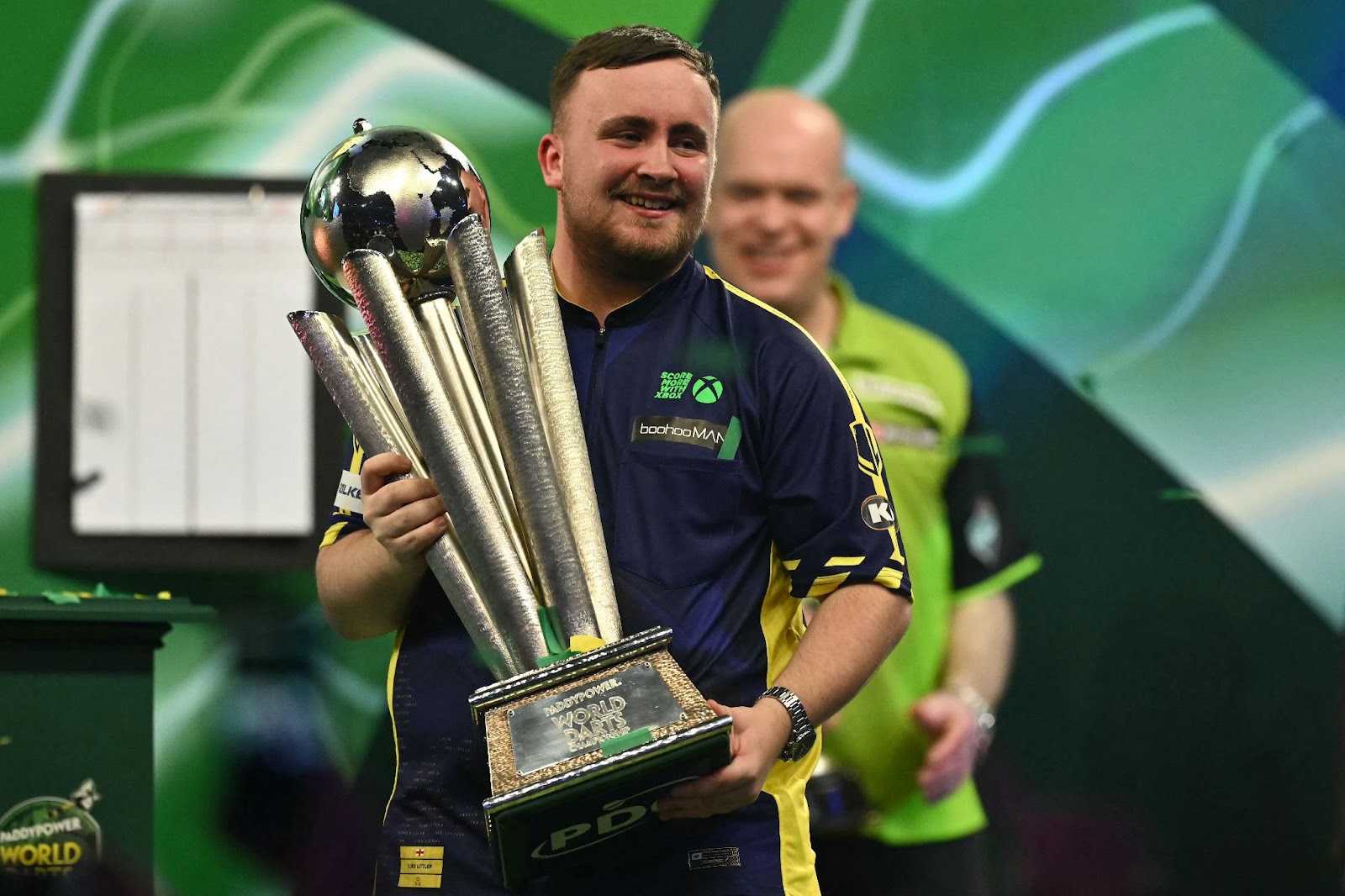
In winning the world championship, the Nuke netted himself £500,000, on top of his £200,000 runner-up prize last year. Overall, his tournament winnings so far exceed a million pounds. His explosive rise — now known as “Littlermania” — has placed darts at the centre of the nation’s attention in a way not seen since Bristow’s heyday in the late 70s and 80s.
Hailing from Warrington but throwing out of St Helens, Littler is a phenomenon. But he’s only the tip of a Merseyside projectile currently hurtling through the sport. Stephen “the Bullet” Bunting, whom Littler swept past in the semi-final, hails from St Helens. So does Michael “Bully Boy” Smith, who won the world title himself in 2023. Also ranked in the PDC top ten is David “Chizzy” Chisnall, St Helens born and raised.
Merseyside has always produced great footballers, world-class boxers, title-winning rugby league players, and now MMA stars, too. But with darts on the rise, could more youngsters here and around the country be following in Littler and co’s footsteps?
Karl Holden, who co-founded the St Helens Youth Darts Academy in the SIDAC Social Club off Leach Lane, and is best known as Littler’s childhood coach and mentor, has seen a swell in youngster participation first hand. During an even busier week than usual, Holden kindly agrees to speak to me in between serving customers. “We had 95 kids turn up last night,” he says. “We normally average about 80 anyway, but it’s very, very busy indeed.” Officially, the waiting list for new starters is up to three months, but one mum on the academy’s Facebook page says her son has been waiting for 12.
“Kids coming into my shop, the age of 21 or under? I reckon,” – Holden pauses to do some guesstimation – “I reckon that’s 400% higher than 15 months ago.”
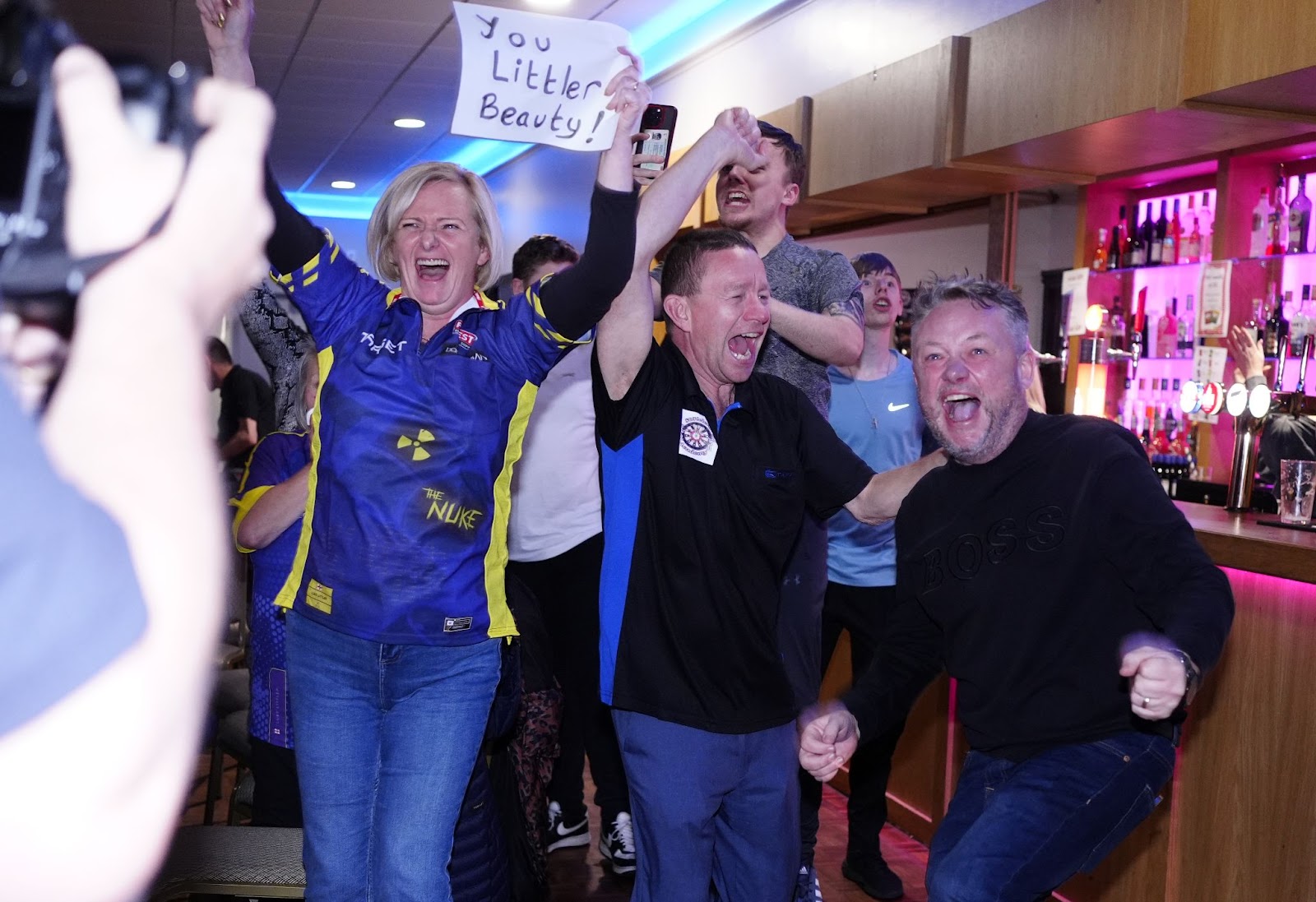
This new wave of young players might be new, but darts is not a recent trend in the historically Lancashire town. In 1948 at Wembley, Harry Leadbetter came top of a 289,864-strong field of players to bring the national championship back to St Helens’ Windle Labour Club. However, from the BDO’s inaugural world championship in 1978 until the acrimonious split that created its PDC successor in 1994, only one finalist — 1993’s runner-up, Cumbrian Alan Warriner — hailed from the North West of England.
The region now also boasts Crewe’s world number one, “Cool Hand” Luke Humphries, who turned back Littler’s 16-year-old vintage to win the world title in 2024, and Stockport’s Nathan “the Asp” Aspinall, who was a semi-professional goalkeeper before he took up darts full-time.
The Manchester Guardian article previewing Leadbetter’s triumph says of his competitors: “None of them is exactly a lad at the game, for their average age is not far short of forty […] Darts was never a game where age defers to youth”. Clearly, the paper never saw Bristow coming, let alone Littler.
‘From the ground, light’
St Helens is the very paradigm of a post-industrial northern town. Once the home of Greenhall’s Brewery, Beechams pharmaceuticals, and Ravenhead glassworks, St Helens also housed coal mining sites Lyme Pit, Clock Face, and Lea Green, so fertile the town’s motto became Ex terra lucem: “from the ground, light.” The last of those collieries, Sutton Manor, closed in 1992; Jaume Plensa’s deathly white Dream sculpture, gargantuan as it is strange, is the last pit’s grave marker.
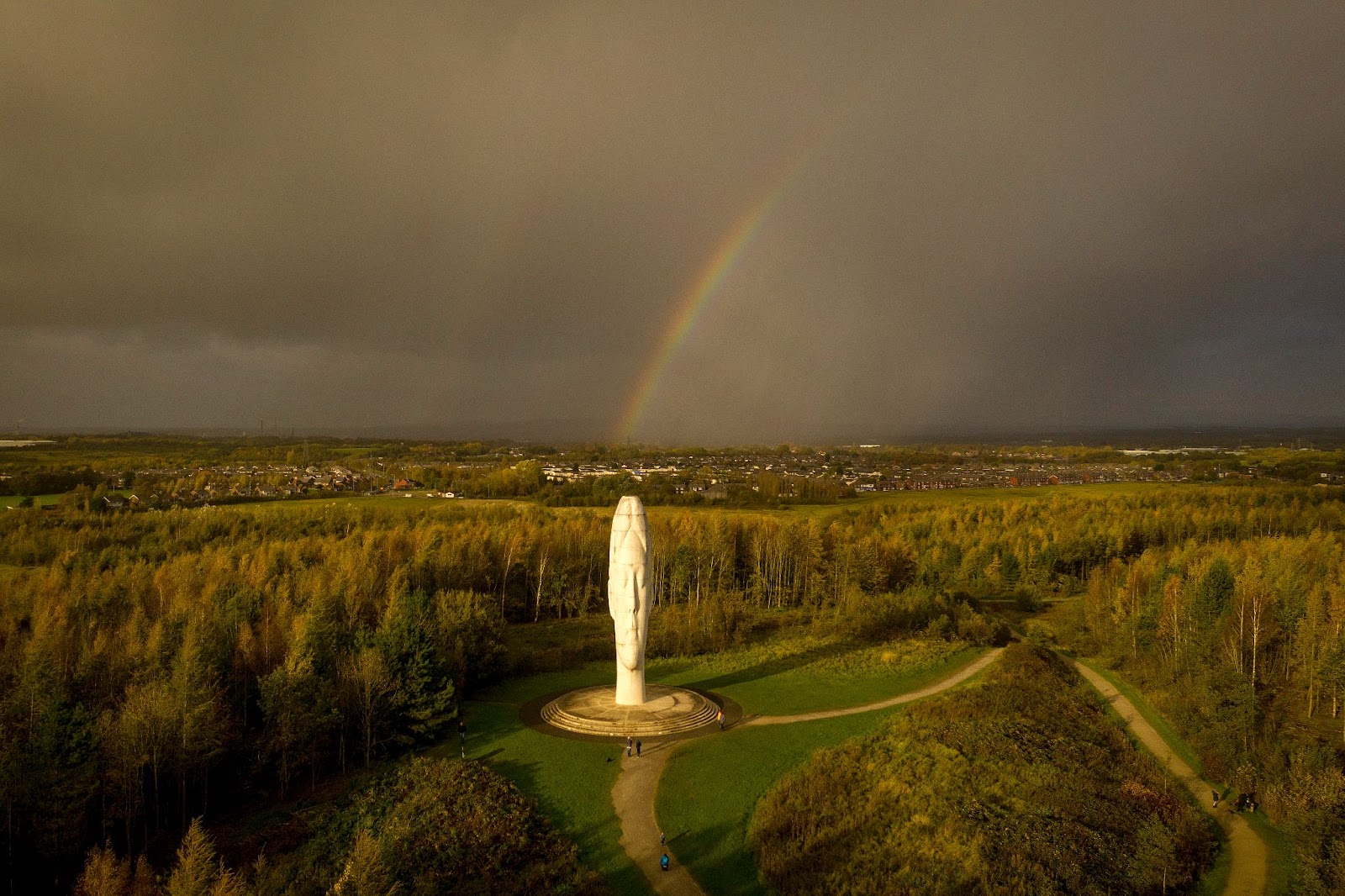
Since then, regional pride has largely relied on Saints, the 10-time rugby Super League winners. But because of its accessibility, darts may even challenge rugby league’s regional pre-eminence – if schoolteachers could get with the programme.
“When I try to take [darts] to the school I used to go to,” Holden says, “they say ‘No, it’s too dangerous!’ But they play rugby league, with [kids] breaking arms and getting tackled, bruised, and battered! There’s no way darts is more dangerous than rugby league. Nobody gets injured if you have the right equipment."
Holden’s St Hellenic passion for darts comes from his dad, David, a former Lancashire County player who also coached Michael Smith. David in turn was introduced to the sport by 1948 champion Leadbetter himself, meaning Littler’s lineage can be traced back to darts’ debut on the national stage. Holden still runs the St Helens Darts Shop, which recently moved to a bigger venue on Church Street to accommodate demand. The store distinguishes itself from larger sports supply chains not just by specialisation, but also allowing punters to try before they buy.
Back in darts prodigy Eric Bristow’s day, it was a racier game. Unsung BBC sports broadcasting auteurs deserve some credit for its popularity, split-screening the board with intense, Sergio Leone-esque close-ups so viewers could scrutinise the players’ emotions. But those athletes’ personalities were a big factor, too. The boisterous Jocky Wilson, Bristow’s Rubenesque Scottish rival, would chin pints of beer and quarts of vodka during games. The 20-stone Cliff Lazarenko was allegedly capable of double-digit lager pints while playing. Trying to match “Big Cliff’s” exploits, which on one Canadian Open occasion included vodka, brandy, whisky, gin, and rum, Bristow contracted alcohol poisoning.
“I used to hate that reputation — the fact that darts was known for fat old beer-guzzling men”
From the sublime to the ridiculous, and often back again. Those mercurial characters may have brought viewers, but they also kept the sport relatively niche in the long run. In the minds of critics, satirists, and even some fans, darts became a self-parody.
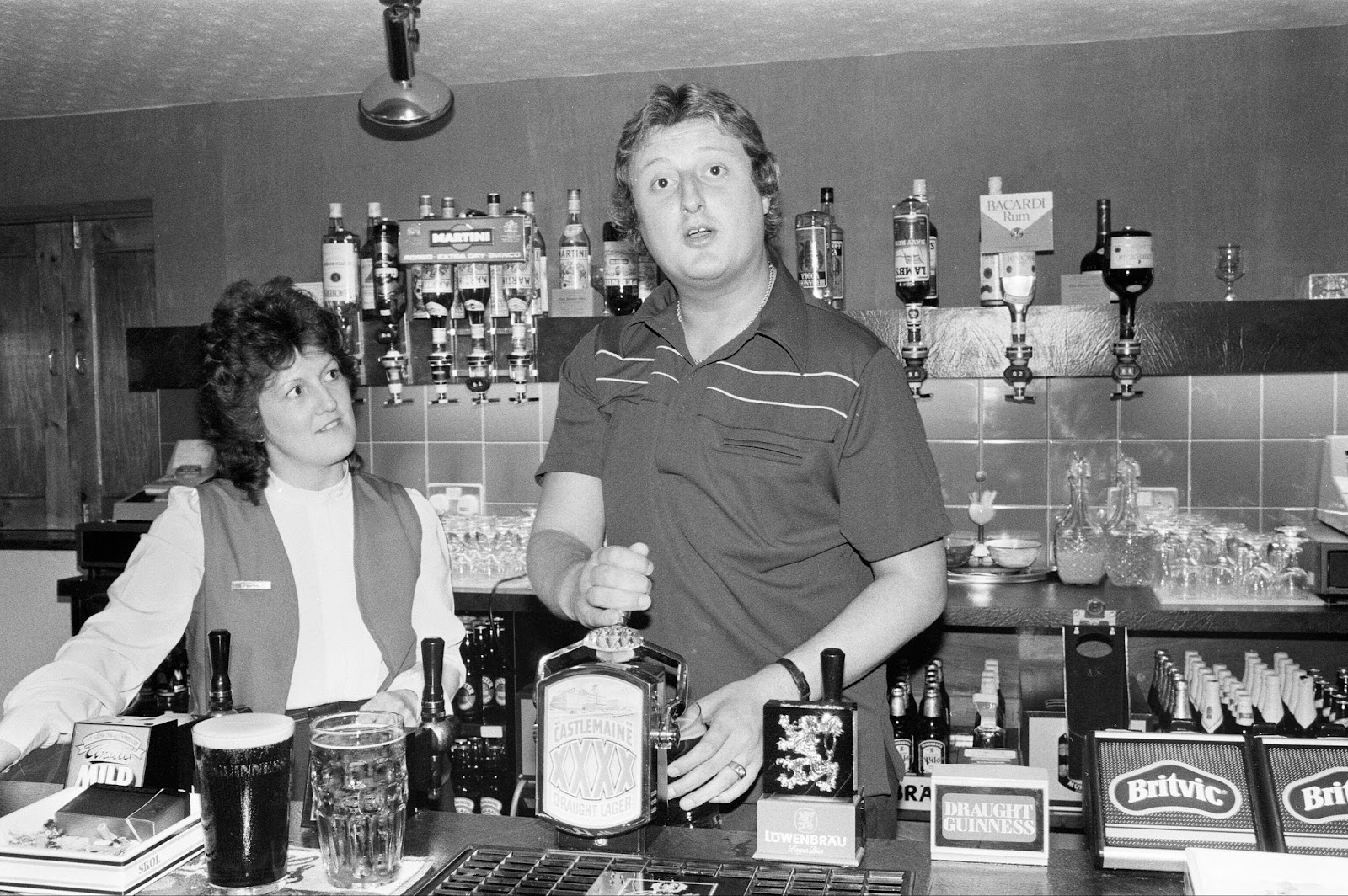
“I used to hate that reputation,” Karl says. “The fact [darts] was known for, you know, fat old beer-guzzling men, shall we say. A lot of darts players back then were aged 35 to 65, but that’s been changing in this town, and everywhere else.” From pub to county level, Karl tells me, teams that were in danger of folding 18 months ago are now thriving. The popularity of millennial players like Bunting, who has successfully harnessed TikTok to bring the game to a different audience, is a factor. But Gen Z’s Littler “has caused 85 to 95% of that,” according to Karl, because of his youth and prize money now in the millions. “Kids think, hey, that could be me. I see people in the streets with Luke Littler shirts on!”
I’d always fancied I was pretty good at “the arrahs”, as the sport was always known down my local. That was until my little sister beat me on her 16th birthday. Having therefore no idea what it takes to be a top player, I ask Karl.
“You need absolute, sheer bottle,” he says. “I’ve seen some cracking players, some of whom still come in the shop — the best players you’ll ever see in practice. But get them on stage, and they just can’t do it.”
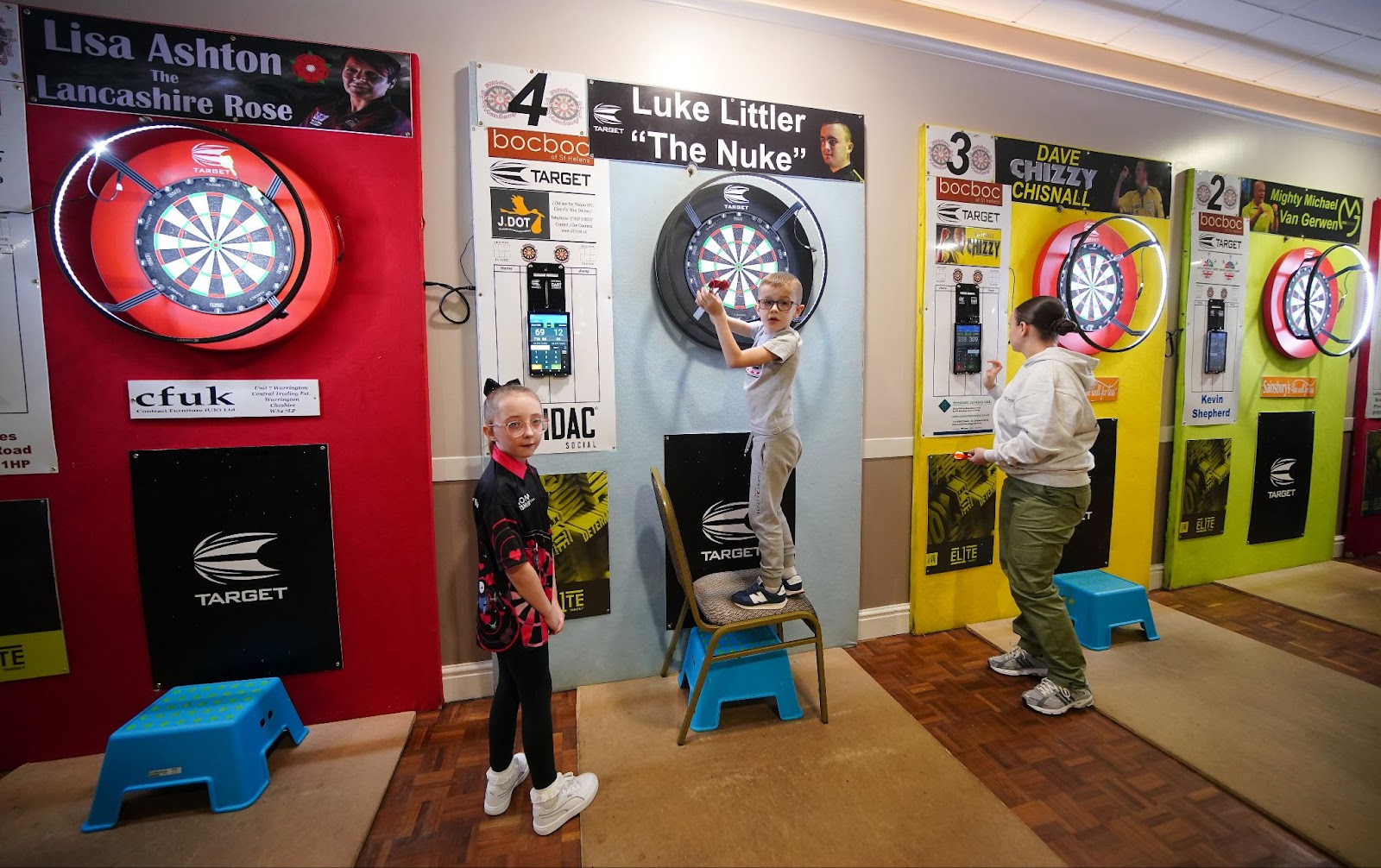
We discuss 16-time world champ Phil “the Power” Taylor, Bristow’s protégé who surpassed even him, and how he would drag opponents into deep waters. Even players who beat Taylor would fall to pieces in their next game, such was the psychological toll he’d taken from them. There’s much more to this sport than chucking projectiles at a board.
You also need to be playing the best – as Littler, Bunting, Smith, Chisnall and others now regularly do. The great encourages the good, and vice versa. “The unskilled dabbler in the art who will wager a foregone pint of mild to get into the fringes of a village game perhaps sees darts at its best,” according to the aformentioned 1948 Manchester Guardian article. Karl may dislike the beer-soaked image of darts, and concern about players’ diets remain, but parting the game from its public house culture would be throwing the baby out with the bathwater. St Helens has the Woodlands pub, boasting four boards and matches most nights. The Windle Arms, a large but unassuming boozer on Hard Lane, hosts the St Helens district league on Tuesdays, the Junior Vault series for young players, and the St Helens ladies’ team on Fridays. From there, you could nearly hit one of the boards at the Windle Social Club, home to the Wasps darts team.
Many of these pub and club players are selected to represent Merseyside or Lancashire at county-level. Some, like Smith and Littler, then go on to conquer the sport. From pub board to the Alexandra Palace: ex terra lucem, indeed.
Alongside the academy, this culture and competitive infrastructure has made St Helens the Mecca of the darts world. Though the sport’s popularity in general seems tied to the fate of its teenage protagonist, its increasing professionalism and accessibility in places like St Helens means its progression from the pastime of “unskilled dabblers” to a major sport looks set to continue. Whether it can supplant rugby league – or, dare we say it, football – in the fervid dreams of Merseyside’s youth remains to be seen. What’s certain is that the fun, terror, spectacle, and aerodynamic beauty of the once-maligned sport is welcoming more and more newcomers into the fold.

Comments
Latest
For Bootle, The Strand is more than just a shopping destination
The council takes back Toxteth streets. But why were they given away in the first place?
The men who raised the flags
On the Wirral, public trust goes up in smoke
Luke Littler conquered the darts world. A new generation wants in
Darts hasn't been this popular since the 1980s. How did Merseyside become the game’s new Mecca?